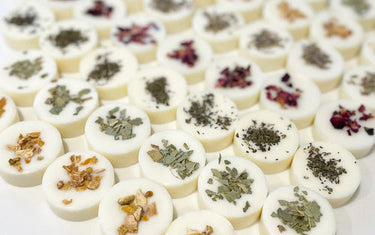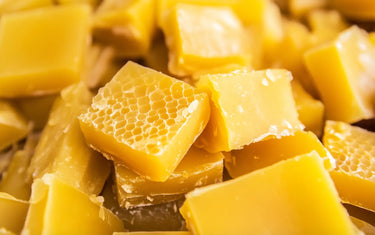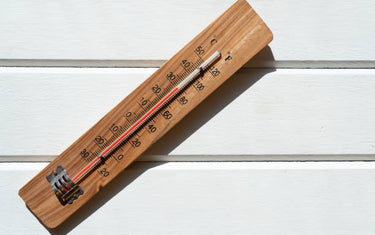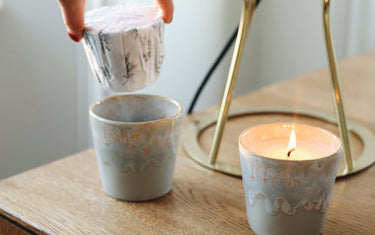5 min read / 5 July 2023 / Laura Garvin Gomez
What is the Best Wax for Wax Melts?
Uncover the ideal wax for your wax melts in our expert guide to enhance your fragrance experience.

Using the right wax for wax melts can make a big difference to how well they perform once placed into a melter.
Although most wax tends to look alike, apart from their differences in shape and size, there are important differences you’ll need to be aware of.
Some types of wax take longer to melt and produce stronger scent throws compared to others, so whilst a particular variety may be suited to candle making, it doesn’t necessarily follow that it will produce similar results as a wax melt.
To make things a little clearer, we will look at the best wax to use for melts and what you also need to consider when weighing up your options. We also offer a great range of essential oils that can elevate the scents of your wax melts.
Nikura’s Wholesale Program
Before we get started with what wax is best to use for wax melts, don’t forget that if you’re thinking of transforming your wax melt hobby into a business venture joining our wholesale program is a great idea.
You will enjoy competitive pricing, premium quality, and a wide selection of scents. It’s free to join and there’s no minimum order required. Join now for exclusive discounts on wholesale soy wax for wax melts and more!
How to choose the best wax to use for wax melts?If you are new to wax melts and want to know how to choose the best type of wax for your creations, take the following points into consideration:
|

What is the best wax for wax melts?
To help you find the best wax for wax melts, here are some of the most popular options you can buy right now:
1. Soy wax
Soy wax is a popular option because it is 100% natural (derived from soybeans), which makes it biodegradable and eco-friendly. Another big benefit is that it has a slower melting point, so it takes longer to burn whilst producing a strong scent throw, making it ideal for melts. Learn how to make soy wax melts.
Take a look at our best soy wax for wax melts:
- Golden Wax 494: Crafted for wax melts, Golden Wax 494 boasts a natural soy formula, lending a luxurious sheen to your creations. It’s excellent at capturing fragrance and dye, ensuring long-lasting scent and vibrant colour retention.
- KeraSoy Pillar KW4120: Formulated for wax melts, votives and premium pillar candles, KeraSoy Pillar KW4120 is a biodegradable soy wax blend. Its innovative formula promises a smooth, flawless finish.
You can also explore our guide on how to make wax melts for beginners.
2. Beeswax
If only natural wax will do for your melts, another good option is beeswax, which is sourced from bumblebee honeycombs. It releases a light, sweet scent when burned and has a high melting point, so you can enjoy the fragrance for longer.
3. Coconut wax
Coconut wax is usually blended with soy wax as by itself it is too soft to be moulded into a solid form. However, this gives it an advantage for high quality wax melts, as it has a low melting point so can easily be used in moulds and it also produces a steady burn.

4. Palm wax
Palm wax is suited to anyone who wants a slow burning natural wax, whilst also releasing a strong fragrance. It offers a high melting point for longevity, and it can last longer than some other types of natural wax. The environmental impact of palm olive production has raised some concerns, so if this is important to you, look for sustainably sourced palm wax.
5. Gel wax
Ideal for anyone who wants to create translucent, colourful wax melts, you should consider using gel wax. This wax has a high melting point so you will be able to enjoy a longer burn time that can often outlast other types of wax. However, gel wax is a by-product of refined crude oil, so it isn’t an eco-friendly option, and it will release toxins into the air. Learn how to make gel wax melts.
6. Paraffin wax
Paraffin wax is on the cheaper end of the scale, which partly explains its popularity and use in a whole host of commercial wax-based products. It has a high melting point, although it is not a natural substance and is known to release toxins when burned.
Take a look at our most popular paraffin wax:
KeraWax 4600 Paraffin Wax: Perfect for wax melts, KeraWax 4600 is a premium paraffin wax blend crafted for both, hobbyists and professional candle makers. Sourced from top-quality materials, it guarantees a smooth, clean burn. This versatile wax effortlessly blends with dyes and fragrances, offering limitless creativity.

Finding what wax to use for wax melts depends a lot on personal preferences. Some varieties are 100% natural and sustainable, whilst others may be a little cheaper and produce a longer burn.
Take some time to weigh up the pros and cons for each one and don’t rush your decision as you want to ensure you have good quality ingredients for your melts.
Our last piece of advice is that you should start with a small amount of wax, so you can check that you are happy with the results without spending a fortune on a lot of wax you will never use again.
Looking to Sell Wax Melts? Explore Our Wholesale Options!
Unlock the potential of selling high quality wax melts with our wholesale program. Whether you're an established seller or just starting, our wholesale wax melt supplies offer unbeatable value and quality. With our range of wholesale soy wax melts, you can elevate your product line and attract more customers.
Why Choose Our Wholesale Program?
- Competitive Pricing
- Premium Quality
- Wide Selection
- Bulk Ordering
Ready to Take Your Business to the Next Level?
Join our wholesale program today and unlock exclusive discounts on wholesale wax melts and supplies. Join now to learn more about our wholesale opportunities and start selling with the confidence of buying from the best place to buy wax for wax melts!









